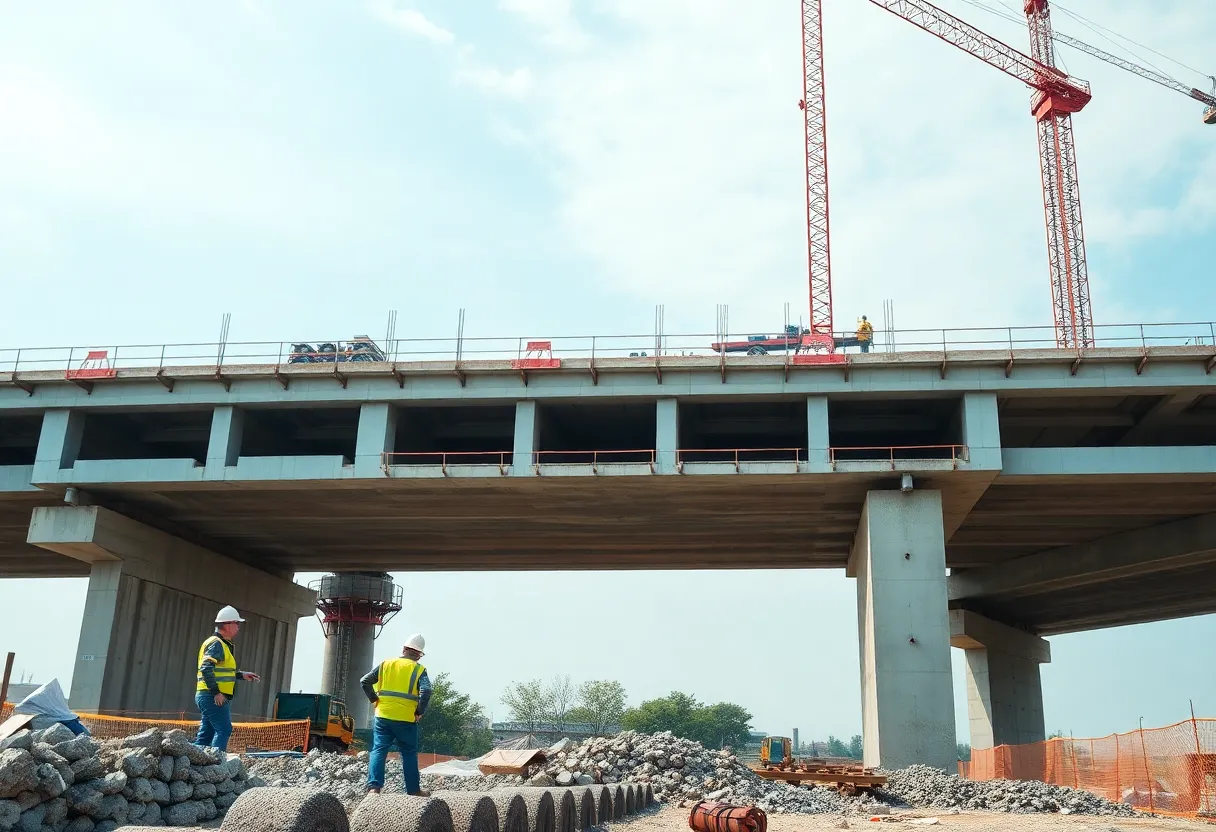News Summary
A recent study on the Shenyang Metro Line 3 project emphasizes the necessity of a construction monitoring system for prestressed concrete continuous girder bridges. Researchers used finite element modeling to analyze key construction parameters affecting bridge alignment and stress during cantilever construction, revealing the significant influence of temperature fluctuations and prestressing loss. The study highlights the importance of rigorous monitoring to ensure structural integrity and suggests integrating advanced technologies for real-time monitoring and management.
Shenyang, China – A recent study has provided critical insights into the construction of prestressed concrete continuous girder bridges, emphasizing the need for an effective monitoring system to manage variations in construction control parameters during cantilever construction. Researchers utilized finite element modeling to analyze the impacts of various parameters, including concrete unit weight, elastic modulus, prestressing loss, concrete shrinkage and creep, and temperature, on bridge alignment and stress states.
The study, conducted from October 2023 to August 2024 on the Shenyang Metro Line 3 project, revealed that temperature fluctuations and prestressing loss significantly affect girder alignment and stress levels, particularly at the construction’s completion stage and during maximum cantilever conditions. In contrast, concrete elastic modulus and unit weight were found to have relatively minor effects on alignment and stress states.
Researchers established a construction monitoring system that incorporated the coupled effects of these critical construction control parameters, noting the significant role that temperature and prestressing loss play in influencing bridge deflection and stress. As construction errors, material properties, and ambient temperature can lead to discrepancies between actual and theoretical structural parameters, this monitoring system aims to ensure accurate data collection and timely interventions during the construction process.
The finite element model simulated the entire construction sequence, taking into account various stages such as concrete pouring and the tensioning of prestressed steel strands. A sensitivity analysis was performed to understand how control parameters affected cumulative deflections and stresses, with the results indicating that the effects become more pronounced in the final-completed state compared to the maximum cantilever state. Researchers tested a series of twelve load-case combinations to analyze deflection and stress variances under adverse parameter combinations.
The study established early-warning thresholds for construction monitoring, proposing a maximum deflection difference of 25.73 mm and maximum stress differences of 5.13 MPa and -9.26 MPa for the top and bottom slabs, respectively. This highlights the importance of rigorous monitoring and quality management in construction, particularly concerning prestressing equipment and temperature-controlled operations.
As prestressed concrete continuous girder bridges gain popularity due to their structural stiffness, integrity, and cost-effectiveness, ensuring successful construction is paramount. The findings underscore the importance of prioritizing parameters that significantly impact alignment and stress to achieve a successful bridge closure during cantilever construction. The research highlights the need for monitoring systems that encompass stress, geometry, and temperature monitoring to evaluate their impacts effectively.
In conclusion, the study confirms that thorough observation of all monitored parameters is essential for maintaining structural safety and integrity throughout the construction of prestressed concrete continuous girder bridges. Future recommendations include integrating Building Information Modeling (BIM) and Internet of Things (IoT) technologies for enhanced real-time monitoring and parameter calibration, allowing for a more robust approach to construction management and safety.
Deeper Dive: News & Info About This Topic
HERE Resources
Additional Resources
- Nature: Construction Control Parameters
- Wikipedia: Bridge
- Chosun: North Korea News
- Google Search: Prestressed Concrete Bridges
- Wiley Online Library: Engineering Research
- Encyclopedia Britannica: Structural Engineering
- VOA News: China-North Korea Rail Link
- Google News: Construction Monitoring
- Smithsonian: Beautiful Bridges
- Google Scholar: Finite Element Modeling
Author: STAFF HERE BALTIMORE WRITER
The BALTIMORE STAFF WRITER represents the experienced team at HEREBaltimore.com, your go-to source for actionable local news and information in Baltimore, Baltimore County, and beyond. Specializing in "news you can use," we cover essential topics like product reviews for personal and business needs, local business directories, politics, real estate trends, neighborhood insights, and state news affecting the area—with deep expertise drawn from years of dedicated reporting and strong community input, including local press releases and business updates. We deliver top reporting on high-value events such as the Baltimore Book Festival, Preakness Stakes, and Artscape. Our coverage extends to key organizations like the Baltimore Chamber of Commerce and Visit Baltimore, plus leading businesses in shipping and healthcare that power the local economy such as the Port of Baltimore and Johns Hopkins Medicine. As part of the broader HERE network, we provide comprehensive, credible insights into Maryland's dynamic landscape.





